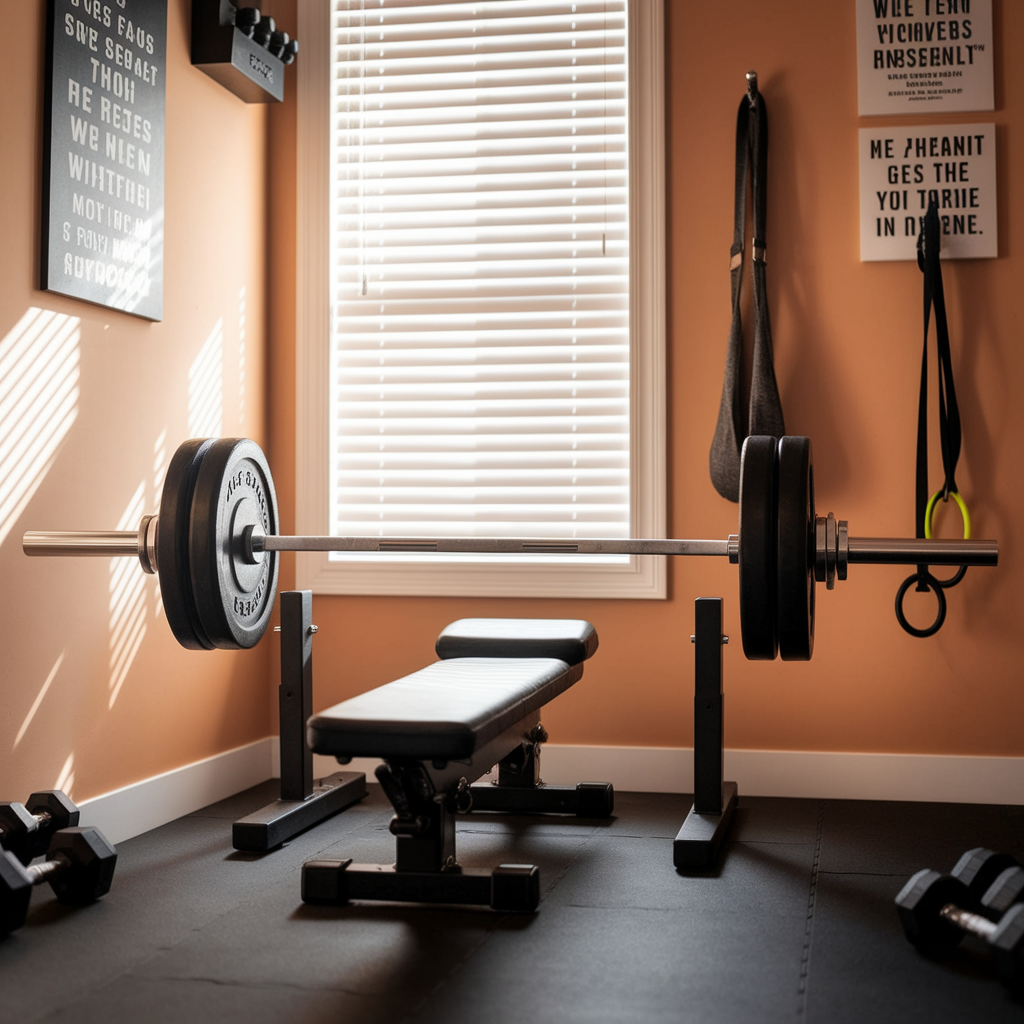Tips for Building a Home Gym on a Budget
Let’s face it: the allure of the gym can sometimes fade, especially when you consider the monthly fees, the commute, and, if we’re being honest, the occasional awkward encounter with a fellow gym-goer. But the thought of having a home gym? Now that’s a game changer. It’s like having your cake and eating it too—minus the guilt! Yet, many people hesitate because they think the cost of setting up a home gym must break the bank. Well, I’m here to tell you: it doesn’t have to. Building a home gym on a budget is entirely possible, and I’ll guide you through that process.
Understanding Your Fitness Goals
Before you dive headfirst into purchasing equipment, take a moment to reflect on what you actually want to achieve. Are you looking to sculpt those biceps, or perhaps you’re more interested in yoga and flexibility? Knowing your fitness goals will help you make informed decisions about what equipment is necessary versus what’s just a shiny distraction.
For instance, if your aim is to build muscle, weights and resistance bands will be your best friends. On the other hand, if you’re more into cardio, consider items like a jump rope or a stationary bike. I remember when I first started my fitness journey; I spent money on a variety of equipment that I ultimately never used. A little pre-planning could have saved me both cash and clutter.
Creating a Dedicated Space
Next, let’s talk about space. You don’t need a sprawling basement or a luxurious spare room to create a home gym. Even a small corner of your living room can work wonders. The key is to make it functional and inviting. Here are some ideas:
- Clear the Clutter: Remove any items that might distract you. Trust me, there’s nothing worse than trying to lift weights while stepping over a pile of laundry.
- Good Lighting: Natural light can uplift your mood. If possible, set up near a window. If not, consider some affordable LED lights to brighten up the space.
- Mirrors: A mirror not only helps with form while exercising but also gives the illusion of a larger space. You can find some budget-friendly options at local stores or second-hand shops.
Choosing Budget-Friendly Equipment
Now, onto the fun part: the equipment! Here’s where many people think they need to spend a fortune. The truth is, with a little creativity and research, you can find excellent equipment without maxing out your credit cards.
1. Start Small
When beginning your home gym, it’s wise to start with the essentials. Here are some cost-effective items to consider:
- Resistance Bands: They’re versatile, portable, and can provide a full-body workout. Plus, they’re usually pretty easy on the wallet.
- Dumbbells: If you can only buy one piece of equipment, make it dumbbells. They come in various weights and can be used for a multitude of exercises.
- A Good Quality Mat: Whether you’re into yoga or HIIT workouts, a durable mat is indispensable. You can often find decent mats at budget-friendly prices.
2. Look for Second-Hand Options
Don’t overlook the power of the second-hand market. Websites like Craigslist, Facebook Marketplace, or even local thrift stores can be goldmines for budget-conscious gym enthusiasts. I once found a barely-used treadmill at a garage sale for a fraction of its retail price. You’d be amazed at what people are willing to part with.
When buying used equipment, make sure to check for wear and tear. A little wear might be acceptable, but you don’t want to invest in a piece of equipment that’s on its last legs.
3. DIY Equipment
For those who are a bit crafty (or just enjoy a good DIY project), consider making your workout gear! Here are a few ideas:
- Sandbags: Fill a durable backpack with sand or dirt for a makeshift weight. They can be used for various exercises and are easy to adjust.
- Water Bottles: Need a quick weight? Fill up some water bottles or milk jugs. They’re cheap, versatile, and, let’s face it, we all have a few extra lying around.
- Plyometric Box: If you’re into plyometrics, a sturdy wooden crate can serve as an effective box for jumps.
Building a Routine
Once you have your space and equipment set up, the next challenge is developing a consistent workout routine. This is where many people falter. It’s all too easy to say, “I’ll work out later,” only to find yourself binge-watching the latest series instead. I’ve been there—more times than I’d like to admit!
1. Schedule Your Workouts
Just like any important appointment, treat your workouts as non-negotiable. Write them down in your calendar or set reminders on your phone. Find a time that works best for you, whether it’s early morning or after work. Consistency is key.
2. Mix Things Up
Variety is the spice of fitness! Keep things interesting by mixing up your workouts. One day you could focus on strength training, the next on cardio, and perhaps a yoga session over the weekend. This not only helps with motivation but also keeps your body guessing.
3. Join Online Communities
Sometimes, all you need is a little accountability. Online fitness communities on platforms like Facebook or Reddit can provide support, motivation, and even workout ideas. Plus, sharing your progress with others can keep you inspired.
Nutrition Matters
Let’s not forget that fitness isn’t just about lifting weights or running laps—it also heavily involves nutrition. You can work out like a beast, but if your diet is a mess, you may not see the results you want. Fortunately, eating well on a budget is entirely feasible.
1. Meal Prep
When it comes to saving money and eating healthy, meal prepping is a game changer. Spend a few hours on the weekend preparing meals for the week, and you’ll save both time and money. Plus, you’ll be less tempted to grab takeout.
2. Buy in Bulk
Purchasing items like rice, beans, and oats in bulk can significantly reduce your grocery bill. These staples are not only budget-friendly but also nutritious. And don’t forget to include seasonal fruits and vegetables—they can be both affordable and delicious!
3. Plan Your Meals Around Sales
Keep an eye on grocery store flyers and build your meals around what’s on sale. I once whipped up an entire week’s worth of meals for under $50 just by shopping smart. It’s all about being flexible and creative!
Stay Motivated
Let’s be real; staying motivated can sometimes feel like a Herculean task. There will be days when you just don’t feel like working out. On those days, it’s essential to have strategies in place to keep you going.
1. Track Your Progress
Whether you use a fitness app, a journal, or good old-fashioned sticky notes, tracking your progress is crucial. Seeing how far you’ve come can be incredibly motivating. And let’s not forget the satisfaction of crossing off workouts on your to-do list!
2. Reward Yourself
Set small goals and reward yourself when you achieve them. Maybe it’s a new workout outfit, a massage, or a day off to do absolutely nothing. Whatever it is, having something to look forward to can be a great motivator.
3. Find a Workout Buddy
If possible, recruit a friend or family member to join you. Having someone else to work out with can make the experience more enjoyable and keep you accountable. Plus, who doesn’t enjoy a little friendly competition?
Maintaining Your Home Gym
Once you’ve established your home gym, it’s essential to maintain it. A cluttered or disorganized space can quickly deter you from working out. Here are some tips to keep your gym in tip-top shape:
1. Regular Cleaning
Simple as it sounds, a regular cleaning routine can help keep your workout space inviting. Wipe down equipment after each use and take a few minutes weekly to declutter. A clean space feels more motivating!
2. Rotate Equipment
If you find yourself losing interest in your current routine, consider rotating your equipment or trying new workouts. Bring that jump rope back out or challenge yourself with a new strength training routine. Keeping things fresh can reignite your passion for fitness.
3. Assess Your Needs
As you progress, your needs may change. Don’t hesitate to reassess your equipment and make adjustments as necessary. If you find you’re not using a particular piece of equipment, consider selling it and investing in something that aligns more with your current goals.
In Conclusion
Building a home gym on a budget is not only possible; it can also be incredibly rewarding. By setting clear goals, creating a dedicated space, and being strategic with your equipment choices, you can design a workout environment that suits your needs without emptying your wallet.
Remember, fitness is a personal journey, and it doesn’t have to look like anyone else’s. So, go ahead and embrace your unique path to health. With a little creativity, determination, and maybe a splash of humor (because let’s face it, laughter is also great exercise), you’ll find that a home gym can be one of the best investments you make.
Now, get out there (or stay in there) and crush those fitness goals! Your future self will thank you.







